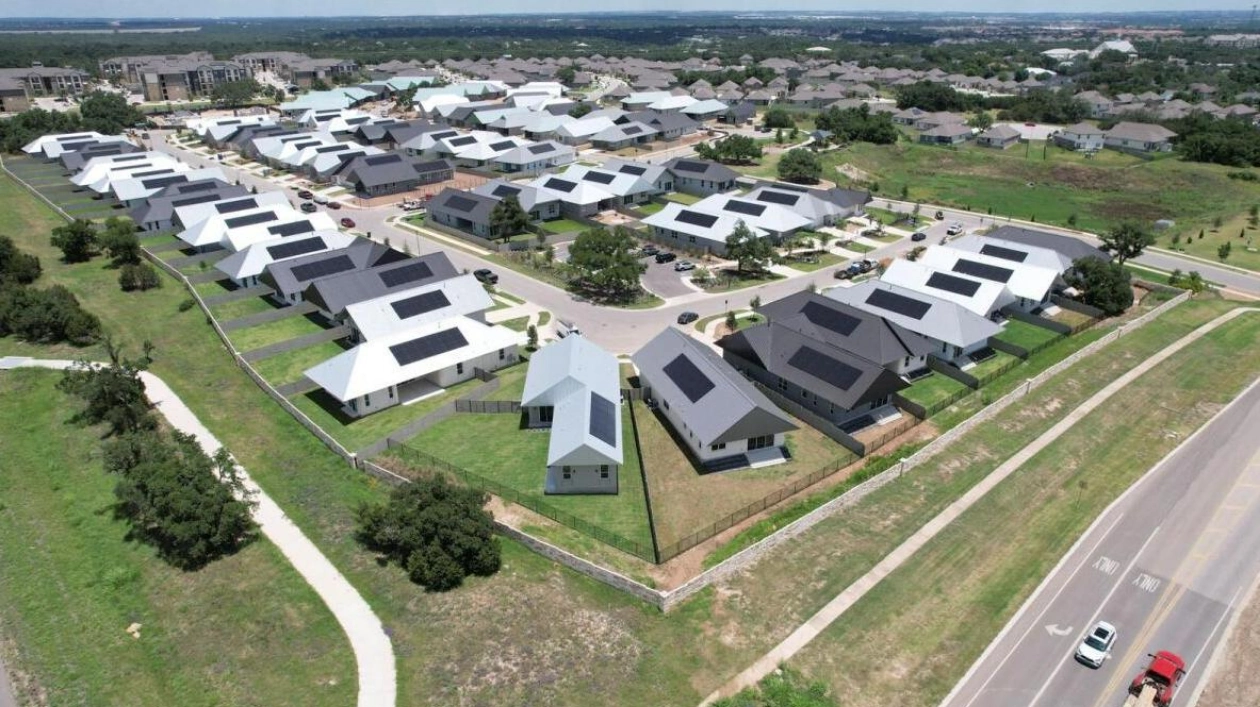Similar to other desktop 3D printers, the Vulcan printer constructs objects layer by layer, but this particular printer is over 45 feet (13.7 m) wide, weighs 4.75 tons, and is capable of printing residential homes. This summer, ICON's robotic printer is completing the final stages of printing 100 3D-printed houses in Wolf Ranch, a community located in Georgetown, Texas, approximately 30 miles from Austin. ICON commenced printing the walls of what it claims to be the world's largest 3D-printed community in November 2022. In comparison to conventional construction methods, the company asserts that 3D printing homes accelerates the process, reduces costs, demands fewer laborers, and significantly cuts down on construction waste. "This introduces a significant level of efficiency to the market," remarked Conner Jenkins, ICON's senior project manager. "Instead of having multiple crews for constructing a wall system, we now have a single crew and one robot."
After mixing concrete powder, water, sand, and various additives and pumping them into the printer, a nozzle extrudes the concrete mixture layer by layer along a pre-programmed path, resulting in walls with a corduroy-like texture. These single-story homes, ranging from three to four bedrooms, typically take about three weeks to complete the printing process, with traditional methods used for the foundation and metal roofs. Jenkins noted that the concrete walls are engineered to withstand water, mold, termites, and severe weather conditions. Lawrence Nourzad, a 32-year-old business development director, and his girlfriend Angela Hontas, a 29-year-old creative strategist, bought a home in Wolf Ranch earlier this summer. "It feels like a fortress," Nourzad stated, confident in its resilience against most tornadoes. The walls also offer excellent insulation against the Texas heat, maintaining a cool interior even without the air conditioner running at full capacity.
However, the thick 3D-printed walls posed a challenge for wireless internet connectivity. "These walls are very strong and thick, providing significant value as homeowners and excellent insulation during a Texas summer, but they do not allow signals to pass through well," Nourzad explained. To address this, an ICON spokesperson mentioned that most Wolf Ranch homeowners opt for mesh internet routers, which distribute the signal from multiple units throughout the house, as opposed to a single traditional router. The 3D-printed homes in Wolf Ranch, known as the "Genesis Collection," are priced between approximately $450,000 and close to $600,000. Developers report that slightly more than one quarter of the 100 homes have been sold. ICON, which printed its first home in Austin in 2018, aspires to extend its technology to the Moon. NASA, under its Artemis Moon exploration program, has contracted ICON to develop a construction system for building landing pads, shelters, and other structures on the lunar surface.






